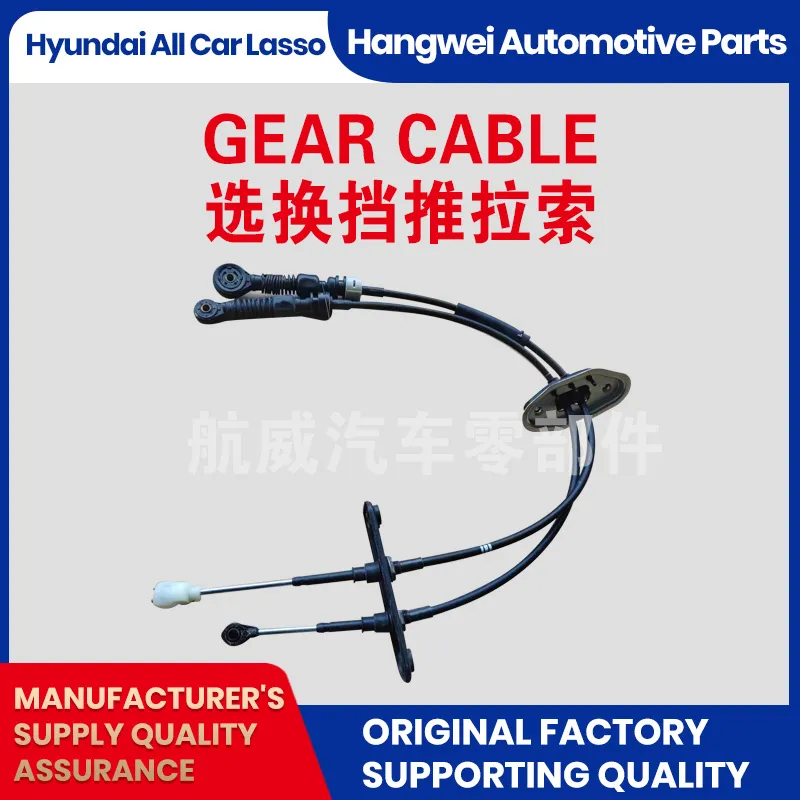Understanding the Importance of Throttle Cable in Engine Performance and Control
The Importance of Throttle Cables in Automotive Engineering
In the realm of automotive engineering, the throttle cable serves as a critical component that plays a vital role in enhancing vehicle performance and safety. This slender yet significant cable is responsible for connecting the accelerator pedal to the throttle body, translating the driver's intention into action by regulating the flow of air (or air-fuel mixture) into the engine. Understanding the functionality and importance of throttle cables can provide valuable insights into how modern vehicles operate and the evolution of performance engineering.
Functionality of the Throttle Cable
At its core, a throttle cable is designed to transmit the movement of the accelerator pedal to the engine's throttle body. When a driver presses down on the accelerator, the cable tightens, which in turn opens the throttle valve. This allows more air to flow into the intake manifold, necessary for producing the power required to accelerate the vehicle. Conversely, when the pedal is released, the cable loosens, closing the throttle valve, which decreases air intake and reduces engine speed.
Throttle cables traditionally functioned in a purely mechanical capacity. However, as vehicle technology has advanced, many modern vehicles have shifted to electronic throttle control (ETC) systems. In these setups, the physical cable has been replaced by sensors and electronic signals. This transition has built-in advantages, such as better performance, improved fuel efficiency, and enhanced precision. Yet, the basic principle remains the same; controlled airflow into the engine is essential for optimized performance.
The Evolution of Throttle Technology
The history of throttle cables dates back to the early days of automotive engineering. Initially, these cables were quite rudimentary, often made from steel wire covered with protective sheathing. Over time, advancements in materials and manufacturing processes have led to the development of more durable, efficient, and reliable throttle cables that can withstand the rigors of varied driving conditions.
The introduction of electronic throttle control in the late 1990s marked a significant turning point in throttle technology. With ETC systems, the reliance on a physical cable was eliminated, leading to the development of drive-by-wire technology. This innovation not only allows for smoother acceleration but also integrates with various vehicle systems to enhance safety features, such as traction control and stability management.
Advantages of Modern Throttle Systems
throttle cable

1. Increased Precision Modern throttle systems provide a higher degree of accuracy in determining how much air enters the engine. This precision is vital for maintaining optimal engine performance and efficiency across different driving conditions.
2. Fuel Efficiency By optimizing the air-fuel mixture and improving combustion efficiency, electronic throttle systems often lead to better fuel economy. This not only saves money for the driver but also contributes to reducing emissions.
3. Enhanced Safety The integration of electronic throttle systems with other vehicle safety features allows for immediate response to various driving situations. For example, if a driver inadvertently accelerates too quickly, the system can intervene to prevent loss of control.
4. Customization Electronic throttle control systems can also be programmed to personalize driving experiences. Drivers can select different response profiles, ranging from eco-friendly modes to high-performance settings, according to their preferences.
Maintenance and Challenges
Despite the advancements in technology, regular maintenance of throttle cables—both mechanical and electronic—is essential for vehicle longevity and performance. Mechanical cables can wear out over time, leading to sluggish acceleration and difficulty in pedal response. It's important for vehicle owners to monitor cable integrity and replace them when signs of wear are evident.
For electronic systems, issues may arise from sensor malfunction or electronic controls going awry. Regular diagnostic checks can help identify potential problems before they escalate, ensuring that the vehicle remains safe and responsive.
Conclusion
In conclusion, whether it is the traditional mechanical throttle cable or the advanced electronic throttle control systems, throttle cables are an indispensable element of vehicle design and operation. Their evolution reflects broader trends in automotive engineering, emphasizing efficiency, safety, and performance. As technology continues to advance, the importance of reliable and well-maintained throttle systems will undoubtedly remain a critical priority for both manufacturers and consumers alike. Understanding their role is essential for anyone interested in the dynamics of vehicle performance and engineering.
-
Workings of Clutch Pipe and Hose SystemsNewsJun.04,2025
-
The Inner Workings of Hand Brake Cable SystemsNewsJun.04,2025
-
The Secrets of Throttle and Accelerator CablesNewsJun.04,2025
-
The Hidden Lifeline of Your Transmission Gear Shift CablesNewsJun.04,2025
-
Demystifying Gear Cables and Shift LinkagesNewsJun.04,2025
-
Decoding Clutch Line Systems A Comprehensive GuideNewsJun.04,2025
